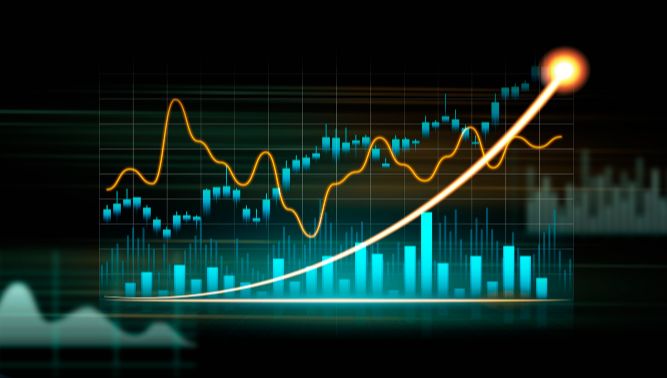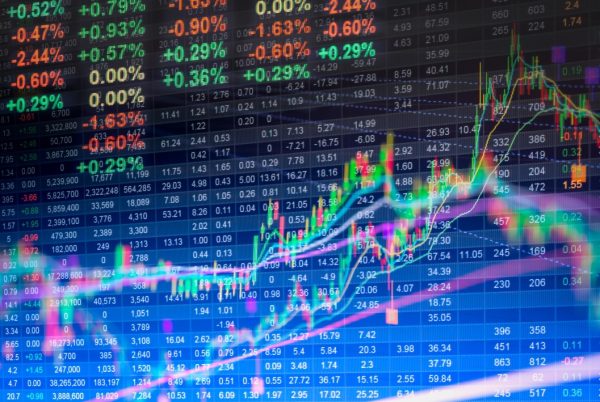Rhys Williams, CFA, Chief Strategist, Spouting Rock Asset Management
June 2, 2023
Mid-year is always a good time for reflection. What did investors predict correctly? I am sure everyone mortgaged their house on January 1st and put the proceeds into tech stocks. What could go wrong? Seriously though, the first half emphasized the need for proper diversification, the need to have a balanced portfolio and a sense of humility that predicting which sub-sector of the equity market will outperform often ends in tears. The market bounces between extremes of euphoria and fear. Tech imploded in 2022 and has risen like a phoenix in 2023. Because of its dynamism, we believe it deserves its place in a diversified portfolio, but investors must avoid the urge to binge and purge in this market, it has a way of afflicting the comfortable. By comfortable I mean not your net worth, but your conviction in your positions.
For those paying attention, the performance of the S&P 500 Index (S&P 500) has been very narrow, approximately seven stocks represent most of the performance and 20 stocks account for all of it. While surprising, it is not a total shock with the benefit of hindsight. The Federal Reserve (Fed) has raised rates in every meeting, with the fastest rise in history since they began increasing rates in March 2022. This rising rate cycle has barely been a year, but it feels like 10. Large cap has trumped small cap, led principally by the large FAANG stocks. Bonds, the consensus favorites for obvious reasons (economy slowing, international tensions, debt ceiling debate, earnings decelerating), are pretty flat, but the coupon is the most generous in a generation.
FAANG stocks performed so well it turns out, not just because of disastrous performance last year, but because they have a lot of cash, are generating cash due to their large moat businesses and were relatively inexpensive after the decimation of 2022. Additionally, they enjoyed the secret sauce of AI. While six months ago, AI needed to be identified as artificial intelligence, today, it is a ubiquitous term, like Google, or Xerox before it.
As a portfolio manager in 1998 and 1999, I can attest that AI feels a lot like the internet of that era. The internet was going to change lives and stocks went to crazy valuations because they were the Pied Piper of this new, new thing. Investors were not wrong in 1999, they were just early. They were not great judges of which companies would thrive with the internet’s promise. In fact, I can remember the indifference given to other sectors of the market, regardless of fundamentals, while investors piled into tech stocks. While we know the internet stock mania ended badly, it experienced spectacular gains and truly novel metrics designed to reward eyeballs, not profits. In comparison, AI so far feels grounded in reality; no la-la land yet. Those stocks with an AI story are now expensive, but still justifiable on traditional metrics. If we are going to make AI a baseball game, it feels like the third inning, not the top of the ninth.
Picking the winners and the loser in the AI race will not be obvious. Big tech has some major advantages as they have spent billions on large language models which are the building blocks of AI, and will continue to spend billions annually designing new applications. While this will give them a seat at the table, there will no doubt be new companies that take these large language models and design life-changing applications. Big tech and Nvidia will not be the only winners. Remember Mark Zuckerberg was in ninth grade in 1999, he did well despite missing the first few innings. In 1999, the arms merchants were major winners. Cisco rose dramatically to a market cap of $270 billion, profitably selling networking equipment to these new internet start-ups. After a good run this year, Cisco’s market cap is $236 billion on May 29, 2023, an almost 20% cumulative loss over 23 years. This is a good reminder that not even the best arms merchant is guaranteed success if the war changes. We believe that there are several obvious arms merchants in this new race, and they are positioned to enjoy a strong tailwind for the next few years. We think AI is still new enough that investors do not have to worry yet if this is the peak.
Just like the internet, AI promises to be very margin enhancing, as it could do to white-collar jobs what factory automation and robotics did to blue-collar assembly-line jobs 35 years ago. It also promises to be deflationary in the sense that while companies will keep some of these savings, some will be passed on to consumers as well. This should be a welcome development in a world that is structurally short of workers and demographically challenged in the future. In fact, it is the ace in the hole for the Fed as they fight over the long term to limit inflation. Even after the price decreases to customers, Goldman Sachs suggested that operating margins may increase 400 basis points over the next 10 years, due to AI cost savings. To give you a sense of what that means, the operating margin for the S&P 500 was 12.7% in 2022, so Goldman predicts that AI means a 25% percent increase in profitability for the average company. Revolutionary indeed.
While we are mindful of the AI opportunity, we also believe a decent allocation to other sectors is warranted. Hard to know exactly when other sectors receive some investor love, but when they do, investors will move just as hard into those groups as they did into technology stocks. The first half was a tale of two cities, as defense, energy, healthcare, consumer cyclicals and consumer staples, along with REITs and banks, sold off. Banks were demolished due to the high-profile runs on three very large banks, and the contagion worries.
Almost no one guessed tech would soar and these other groups would fall in 2023, some dramatically, so investors should consider not putting all their chips on technology. If we are right that we are early in AI, we believe investors have an opportunity to make plenty of money, even if they are wasting money in other sectors on a relative basis. If we are closer to 1999 than we realize, then a balanced portfolio will prove more prudent. The valuation of the major indexes is very tech-stock driven, so it looks quite high now. But the value in the market is in many of those unloved groups struggling for attention. Many stocks trade below 10 times earnings, with current fundamentals still strong.
While index investing did very well so far this year, due to technology being the largest weighting in the major indexes, remember that the top seven tech stocks were almost all the gain, as the index is market-cap weighted. Investors desire index funds because they diversify risk; however, in this case, the index is much less diversified than most realize. In 2022, no one considered the Nasdaq 100 to be safe just because it contains 100 important companies. So, it is possible that index investing doesn’t accomplish the goal of diversifying risk as currently constructed.
We think a carefully constructed portfolio of stocks and bonds has the potential to perform well assuming a wider war does not develop and inflation continues to decrease. We think a CPI print with a “3” in it as early as this summer is baked in the cake due to the rollover in rents and the lag in how rent is calculated. We are skeptical that 2% inflation is attainable, without AI, but we think it is quite attainable as AI applications ramp throughout the economy.
The two biggest risks to our forecast are geopolitical tensions with China and Russia boil even more intensely and something happens to widen the war in Ukraine or start a war in Taiwan. We think a war with Taiwan is extremely unlikely in the next two years due to economic problems in China, and an upcoming election in Taiwan with a good chance of a pro-business party coming to power, which desires better relations with the mainland. Biden has also said he wants better relations with China. So, he may temper the desire of many in his administration to keep poking the Chinese bear. On Russia, we think the war will have to wind down in the next two years or at least not be fought with this level of intensity. We say this not because we see a solution, but because both sides run out of willing or not-so-willing soldiers. At this point, we think Putin has decided he can outlast the West and Ukraine’s willingness to fight. He may very well be wrong in this conclusion, but for the balance of 2023 and much of 2024, we see the status quo continuing, a humanitarian disaster, but not a stock-market disaster. In short, we see nothing great emanating from geopolitics, but nothing that will cause an economic meltdown either.
Finally, the other big risk to this forecast is a Fed-induced recession, causing earnings to turn down, and sending stocks lower. This is the recession that most strategists have been forecasting for the better part of the year, due to the unprecedented size and speed of interest rate increases. This is exactly why we think having some high-quality bonds ought to be a good hedge, as interest rates could likely decline under this scenario. Last year, a 60% percent stocks and 40% percent bonds portfolio was destroyed, as investors lost money on both sides. This year, though we expect the higher coupon from bonds and an insurance policy that the Fed overdoes it, offers potential protection if our stock market call is too optimistic.
But once again, we are optimistic that most investors are off-side this stock market, and more money will be forced in despite higher rates. We return to 1999 for guidance. The 10-year note averaged 5.6% and investors still threw caution to the wind, pouring money into tech, despite an attractive risk-free rate. So, we would take the advice of that noted market sage Prince, and “party like it is 1999.”
The views expressed are those of Spouting Rock Asset Management (“SRAM”) platform, as of June 1, 2023, and are not intended as investment advice or recommendation. For informational purposes only. Investments are subject to market risk, including the loss of principal. Past performance does not guarantee future results. There can be no assurance that any SRAM strategy or investment will achieve its objectives or avoid substantial losses. There can be no assurances that any of the trends described will continue or will not reverse. Past events and trends do not imply, predict, or guarantee, and are not necessarily indicative of future events or results. Investors cannot invest directly in an index.





